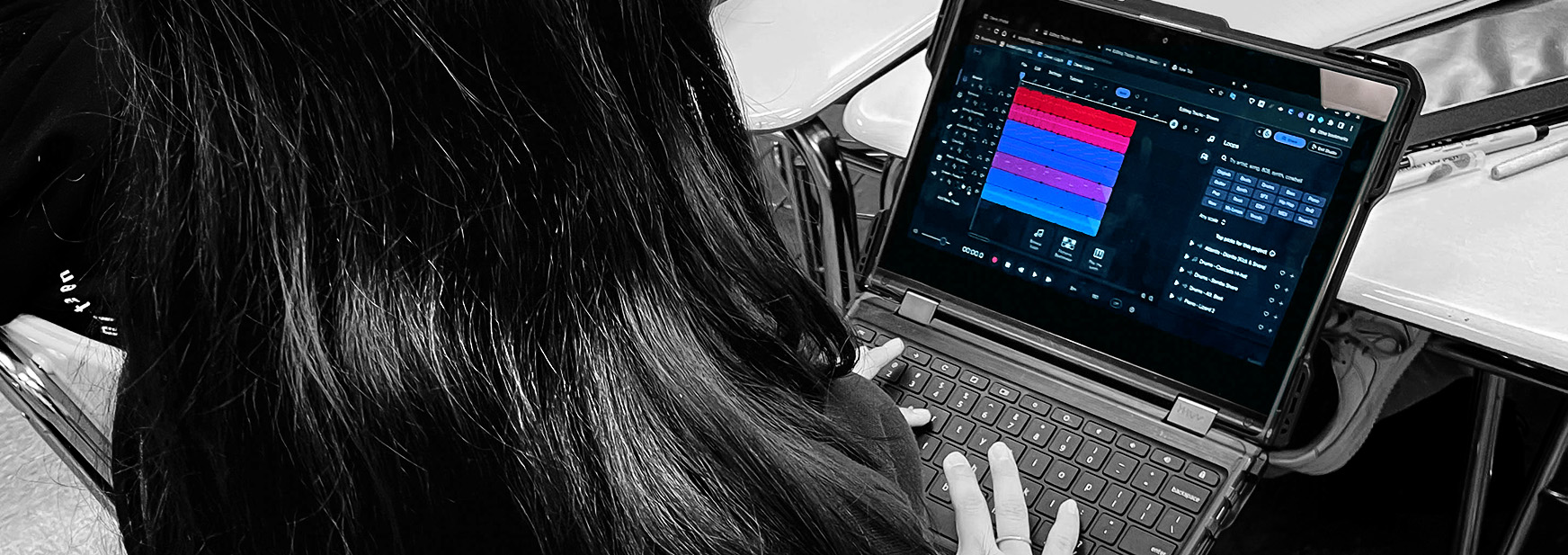
Finding One’s Anthem in Fine Arts Education
December 13, 2022Do you know that voice inside your head? The one that helps you make decisions,
guides you to the best choices and ultimately leads you through life?
Sometimes, it’s best to completely ignore that voice and let someone else
make the decisions for you.

Chan’nel Howard was certain she was going to work for the Social Security Office after college, but when a mentor set up a blind interview for her with a fine arts director of a school district, her life’s anthem was written for her.
Now, she leads the Fine Arts department
at Baltimore City Public Schools (BCPS) and
is advocating for the power of creative expression to support students’
social-emotional learning.
Developing Life Skills Through Music Education
“I’ve always loved music. I can’t think of a time where I didn’t think about music,” says Howard.
As a child, Howard would direct the Sunday choir that played on her radio, then go outside and direct the neighborhood kids in a choreographed dance. She recalls having various anthems for the different phases of her life, from “Scrubs” by TLC when she was with her friends to Mary J. Blige’s “My Life Is Just Fine” when she got married.
It was when Howard attended an open house at Baltimore’s Western High School (WHS), one of only two all-girls public institutions in the country, that she had an epiphany of what music truly meant to her.
Howard recalls, “On the visit, they talked about the school, had some ladies singing, a person playing the piano and I thought that was cool, but the thing that grabbed me was when the marching band came out. It was a marching band, and it was all girls. Girls playing tuba, girls playing baritone horn, girls playing drums. You could have bought me for half a grain of rice and two lentils. That would have been it. When I saw them, I knew this is where I had to go. I wanted to come to this school and do that thing, and that’s what I did. I went to WHS, and I think that was it for me.”
Being raised by a strict grandmother, Howard was no stranger to accountability, but at WHS, she learned a different level of responsibility to her peers in band. She had to show up every day and be fully present in order to work together.
“Any collaborative skills I have as an adult, I owe to the process of learning how to talk to people to figure out how music sounds to one another and how to transpose the various instruments’ sounds into one piece of music,” explains Howard. “But at the time, I had no idea what I would be doing in my life and didn’t know how the skills that I was getting as a musician would play out.”
A Blind Interview Brings Forth a Vision
High school is for learning crucial life skills of collaboration, listening, understanding, and working toward a common goal, but it’s often hard as an 18-year-old to see how those skills will affect one’s life.
Howard enrolled at Frostburg State University (FSU) in Maryland and originally took classes thinking she was going to be a doctor. It wasn’t until a mentor named Dr. Karen Soderberg asked her why she wasn’t taking any music classes that Howard decided to switch gears.
“Even while I was taking the classes, I still just thought of music as this thing that I am doing,” admits Howard. “I didn’t think that I was going to have a career in music. For me, I was just pursuing a passion.”
Howard’s little voice inside her head was telling her to continue her summer job at the Social Security Administration office after graduation, and maybe join the Baltimore Symphony Orchestra as a fill-in. But Dr. Susan Mills of the Division of Performing Arts at FSU knew this was not the path for Howard, so she set her up on a blind interview with Jill Warzer, the fine arts specialist for BCPS at the time.
“I was told I’d be sharing some ideas I had in my portfolio, but then I was asked to play some music, so I hammered out this and that on the piano,” says Howard.
A few days later, she was sent an offer to teach.
“I was adamant that I didn’t want to teach,” says Howard, but Mills didn’t let it go and continued to be the outspoken voice of reason for Howard’s inward conscience. “She called me into her office and said my plan for after college wasn’t a good one.”
“Fast forward, and I’m meeting with Betty Donaldson at Northeast Middle School for my first assignment to teach band. They had not had a music program for 10 years prior to my coming, so it was exactly the opportunity that I needed and didn’t know that I needed,” says Howard.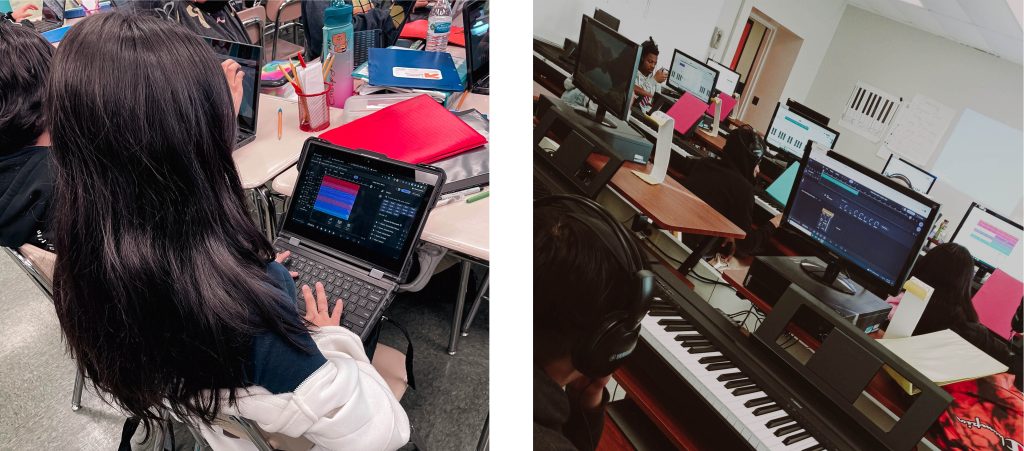
“To Build, to Create, and to Establish a Type of Rapport”
“I was just 21. That’s it,” says Howard of her first teaching position. “But it was an opportunity to build, to create and to establish a type of rapport with kids who at the time I felt like I was not much older than, not really.”
With the years between 21 and middle-school ages being minimal, Howard didn’t feel she had a lot of insight in the beginning of her career, but when she started teaching, she realized how much she could relate to those students–and how much those students needed her.
“When I looked at them, I could see myself. Some of them were having the same type of struggles I had. They had drug-addicted parents. They had incarcerated parents. Both of those were elements of my story, and so I felt like at that time, if I didn’t do anything else, I had to provide for them the type of acceptance through a music program that was provided for me.”
That didn’t make teaching middle-school students any easier and Howard recalls her first year as a struggle. “Kids were running around the classrooms and turning off lights. It was not easy. I didn’t know what those kids wanted. I didn’t know what they needed. Hell, I didn’t even know what I wanted and what I needed!”
Howard admits, “It got to the point that every day at 5:00 pm, I would walk up to my administrator’s office and quit. Every day at 5:00. But he knew I was never serious. I was determined. I said I was going to do this, so I had to do it.”
More than 20 years later, Howard is the fine arts coordinator for BCPS. In that time, she has served as a drumline coach at her alma mater WHS and a drumline assistant at Baltimore Polytechnic Institute. She even spent time as an elementary school teacher.
With all those years of experience, Howard learned from a teaching viewpoint the power the fine arts have in giving students the crucial life skills she learned through her high school music education. Now, she is advocating for the fine arts in BCPS and the important role they play in supporting students’ social-emotional well-being.
More Than Just a Fine Arts Camp
Currently, BCPS struggles to implement a systemic and sequential approach to fine arts education. In one part of the city, one can find a thriving art community in the schools, while in another part of the city, there is barely a full-time art teacher on the clock. Elementary students are supposed to have a broad exposure to all of the arts, and middle and high school students are to have the opportunity to choose a specialty and build upon their skills.
This is not the reality in BCPS.
Howard is working to change that by leveraging every possible existing structure as well as building new ones. Using the Elementary and Secondary School Emergency Relief (ESSER) funds that had been provided to supplement learning loss, Howard spearheaded a six-week summer camp that merged the power of the fine arts with the necessity of social-emotional development.
More than 100 K–8 students were immersed in fine arts for seven hours each day, taking 11 fine arts classes over three-week rotations.
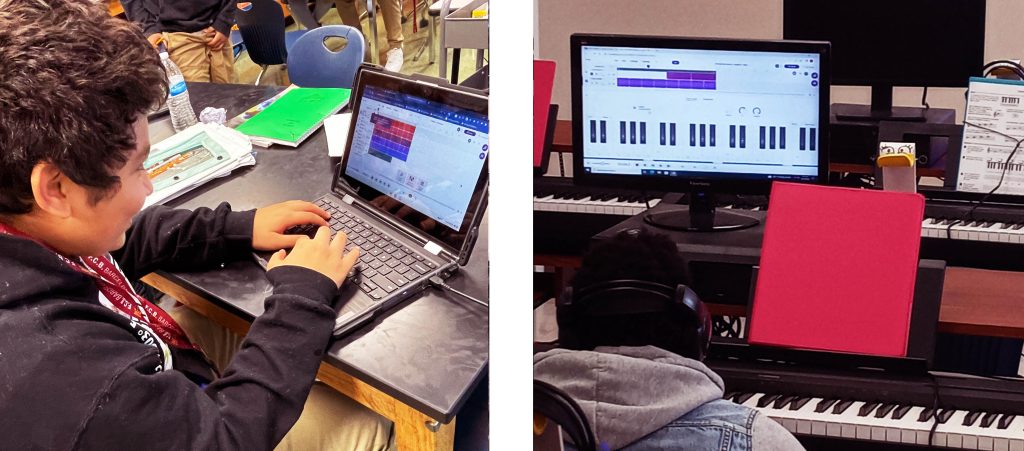
“Fine arts is the vehicle that we used during the summer to help do everything,” says Howard. “Not a lot of things. It was everything. If we felt like kids needed to have the opportunity to emote a little more, we did more in-depth teaching in an art form. If we felt like kids needed to be able to develop the words and maybe be a little bit more empathetic, we pushed that through the theater curriculum.”
What Howard witnessed was the necessity of empowering kids’ own voices. She explains, “Many altercations between students took place on the playground or during down time, not in their classes. Students just didn’t know how to use their words to solve their problems.”
The opportunities Howard provided to use the fine arts to help students develop socially and emotionally only validated Howard’s drive to push for equitable fine arts opportunities for her students.
“They deserve it, and it’s critical,” she explains. “The fine arts are critical to every part of their development; not just their cognitive development, but for the sake of them being humans. They need that. We need to provide opportunities to teach kids to communicate better with one another, and empirical research is starting to show that students who have more immersion in art opportunities do better on standardized tests!”
A Focus on Musical Expression
Communication is a key component to social-emotional growth, but when the pandemic forced students and teachers apart, Howard was left asking, “How can we reimagine art education for visual arts, for music, for dance, for theater? How are we going to do that?”
In a serendipitous moment, music educator Rod Hamilton sent an email to Howard asking about a program called Soundtrap just seconds after she herself was researching it. Hamilton had explained his success using the program and asked to purchase more seats–a request that Howard excitedly granted with one condition: Hamilton would help write the curriculum. From then, BCPS went from 500 to more than 6,000 seats.
Soundtrap provided a way for students to work together to produce music when displaced by the pandemic.
“It was the thing that we needed in that moment to where I didn’t know where it was going to grow, or how fast, or whether or not it was going to catch on,” says Howard. “To now, where teachers are asking for it. We started Soundtrap in high school, then we did it for middle school, and now we’ve pushed it into elementary. Soundtrap brings in the elements of composition and the basics of music composition and music theory. It provides an engaging way to bring this content into elementary schools.”
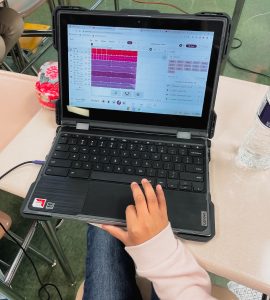 BCPS uses Soundtrap for music, theater, dance, technical theater and soundboard development, and they are exploring ways to bring Soundtrap into the other content areas, including the core classes. The curriculum that Hamilton helps write keeps up with current trends, especially music, in order to better connect with students. According to Howard, students need to be immersed in relevant and challenging curriculum so that they have an understanding of how to apply the key knowledge and skills.
BCPS uses Soundtrap for music, theater, dance, technical theater and soundboard development, and they are exploring ways to bring Soundtrap into the other content areas, including the core classes. The curriculum that Hamilton helps write keeps up with current trends, especially music, in order to better connect with students. According to Howard, students need to be immersed in relevant and challenging curriculum so that they have an understanding of how to apply the key knowledge and skills.
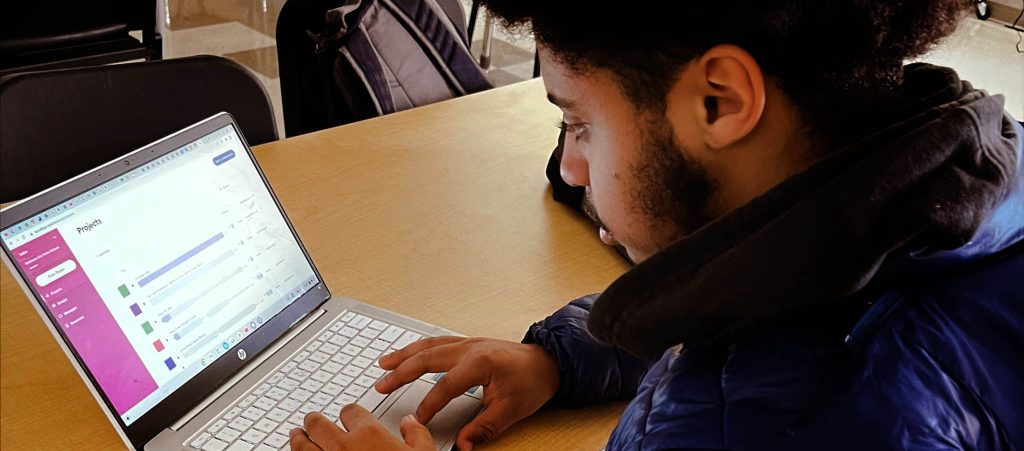
“My goal is, by the time kids get to middle school and high school, they are facilitating their own learning. They’re having a conversation about what they’re being taught, and the only way they can do that is by having that full expanse of exposure in terms of opportunities that start in elementary school through middle school and into high school,” says Howard.
Soundtrap provides a means for students to facilitate their own learning across multiple fine arts mediums. The creative products from the past two years have proven the successful implementation of Soundtrap, from remixing music to producing independent pieces. Howard shares, “I used a soundtrack from a student for the background music to one of my board presentations and explained that this was composed by one of our English learners. It demonstrated the resilience of our kids. They’re truly amazing, and tools like Soundtrap help us to be able to push forward their amazingness.”
Howard admits, “I had no idea Soundtrap was going to end up being such a critical piece to instruction. Now it’s not even the question of whether or not we’re going to offer it. We have it, so teachers and students can go forth and be great. The question is how many more seats do we need?”
Soundtrap is successful beyond the classroom because students want to keep using it to create things. It provides an outlet for them to emote creativity, express their emotions, and ultimately develop strong social-emotional awareness and skills.
“Some of our kids are serious about performing as rappers and dancers, and they want to be able to create their own music. Soundtrap has allowed them the opportunity to do that,” says Howard.
An Anthem, a Calling, and a Destiny
“Fine arts allows students to explore the most intimate parts of themselves, and in terms of music and art, it’s very personal. They’re very, very vulnerable spaces for kids because they are the most honest that you’ll ever see them–when they are creating,” says Howard.
From Fine Arts Camp to Soundtrap, Howard has found her own life’s anthem in her students’ creations.
Those students with whom Howard has built strong relationships have truly humbled her. “I have kids call me mom, and when I started teaching, I never thought I was old enough or mature enough even to be a mother to them, but that’s how they saw me; looking back at that now, I’m honored by that. I’m humbled to do the work that I do in service of about 80,000 students and families in Baltimore City, advocating for the thing that made me whole.”
Her passion is contagious, and her fierce love for fine arts education is simply a means to demonstrate the love for her students because she knows the success she herself has experienced when given a fine arts education. She knows that the students of BCPS deserve the same.
“Baltimore City Public Schools have some of the most creative, some of the most imaginative, most talented kids and teachers that you’ll ever have the opportunity to meet,” says Howard. “I feel like the call that is on my life is a divine one, and so being able to serve these teachers, students and their families in that way always brings me to tears.”
 EDU Portal
EDU Portal


